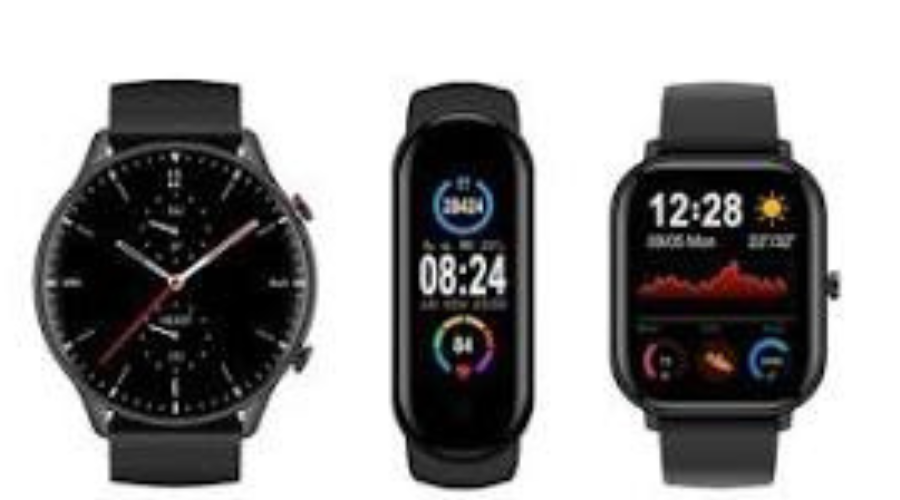
Choosing the finest smartwatch is becoming increasingly difficult since new models are hitting the market rapidly. However, following the important points listed below, you should have no trouble selecting the best smartwatches to suit your demands and preferences.
The first and the most apparent criterion to consider when procuring this device is compatibility. Some smartwatches cannot work with every Smartphone on the market or, better still, every operating system. More importantly, ensure that the smartwatch you settle for is compatible with your mobile device.
Compatibility is typically divided into two categories: It is available only for iOS and Android operating systems. For instance, the Apple Watch is made to synchronize only with iPhones, unlike most smartwatches, like Samsung, Google, or Xiaomi, which operate on Android and iOS devices.
Smartwatches are available in numerous designs and dimensions and must be chosen depending on style and functionality. Consider the following factors:
Select this size so that it fits comfortably on the wrist. A slim and thin strap might be appropriate for a business environment, while a more bulky, athletic strap may be preferred by those who exercise frequently.
Smartwatches are usually manufactured from Stainless steel, Aluminum, or plastic. Each material has a certain level of reliability and appearance—pick the one you are comfortable with.
You can choose between the better-known OLED, AMOLED, or LCD screens, each with its plus and minus sides. LCD needs less power (though lower quality), but OLED and AMOLED give richer colors and deeper blacks.
Many smartwatches on the market are designed with interchangeable straps. For example, you can use a rubber strap for workouts and a leather strap for formal occasions.
The screen is the most visible element of a smartwatch, and its quality and type directly determine your experience. Here are some considerations:
AMOLED and OLED displays provide better image quality and consume less power, which makes these panels suitable for most smartwatches. They deliver rich, vivid colors and very dark ones.
Again, improved resolution entails better display quality and clarity, which may be helpful, especially when reading screens and notifications.
Thinking about the ability of the smartwatch to have a screen that can be viewed constantly without having to elevate your wrist.
To avoid the difficulties and complexities of human finger movements, make the touchscreen sensitive and easy to navigate. Some watches also provide other buttons or a rotating bezel for additional input.
Another feature is battery life, an important aspect to consider if you plan to wear the gadget for several hours or during workouts. Battery life may range from one day to several weeks. Think about your regular schedule and in which cases you would be okay with charging your device.
Smartwatches, mainly used for notifications and other simple operations, will last longer on a single charge.
If you like to track your fitness, GPS, continuous heart-rate monitor, and always-on activity tracking can significantly speed up a battery's drain.
Some have a power saver mode that helps you save battery in cases where you do not intend to use the smartwatch as you want to.
Smartwatches have become necessary in everyday routines, particularly for health-conscious individuals. Consider the following features when making your choice:
Most of today's wearable smartwatches have built-in heart rate monitors, which are crucial for measuring the intensity of workouts and monitoring health conditions.
Integrated GPS is essential, especially for recording distances and routes during physical exercise.
If a consumer is interested in a fitness tracker watch, they should look for one that will support their fitness goals from running, cycling, swimming, and other activities.
Sleep tracking is, therefore, one way of analyzing sleep patterns to enhance the overall quality of sleep.
Most apps and integration with third-party applications can add value to your smartwatch. Find out if the smartwatch has many apps and whether certain apps you require for your day-to-day operations are supported. For instance, if you are a runner, ensure it integrates with running and other fitness-friendly applications.
Smartwatch capabilities and experience can be affected by the connectivity options of a smartwatch. Standard connectivity features include:
Internet connection enables your smartwatch to connect to internet services and update when your Smartphone is out of reach.
Bluetooth is crucial for pairing your smartwatch with your Smartphone to receive call notifications, messages, and more.
Some smartwatches have cellular connectivity, which means you can use them to make calls, send messages, or stream data without needing the Smartphone they are paired with.
You need a water-resistant model to use your smartwatch while swimming or participating in other water activities. Thus, look for an IP rating that will give you an idea of the degree of water resistance. Plain swimming requires a watch with IP68 ratings, while diving or snorkeling requires a watch with IPX7 or a higher rating.
The smartwatch's operating system can significantly affect its performance and the number of accessible applications. There are two primary operating systems for smartwatches: watchOS for Apple Watch and Wear OS for many other Android-based smartwatches. Be keen on the watch's operating system to sync with your Smartphone easily.
As much as getting the newest smartwatch with all the bells and whistles is fun, understanding your budget and what you will get out of the smartwatch is essential. Some expensive models come with many features you may not require; hence, selecting a product with the most critical features is wise.
Selecting the right smartwatch to suit your purpose is a delicate balancing act comprising purpose, personal taste, and budget. After reading this detailed article, you are now in a position to make a good decision. Ensure compatibility, design, display, battery life, fitness and health features, app store, connectivity, water resistance, OS, and price. Considering the abovementioned factors, you will be in an excellent position to get a suitable smartwatch to complement your routine.